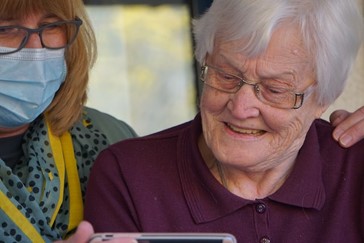Cancer and its treatments often lead to physical challenges that can significantly impact a patient’s quality of life. Physical therapy (PT) plays a crucial role in cancer rehabilitation, helping individuals regain strength, improve mobility, and enhance overall well-being. This blog from Joint & Neuro Rehab Associates delves into the importance of PT in cancer care and how it aids in the journey toward recovery.
The Vital Role of Physical Therapy in Cancer Care
Physical therapy is an essential component of the comprehensive care plan for many cancer patients. Whether it’s dealing with the after-effects of surgery, the fatigue associated with chemotherapy, or the challenges brought on by radiation therapy, PT offers strategies and exercises that are specifically tailored to address these needs.
Understanding the Challenges
Cancer treatments can lead to a range of physical complications, including loss of muscle strength, limited range of motion, lymphedema, pain, and fatigue. These issues not only affect a patient’s ability to perform daily activities, but also their mental and emotional health.
Goals of Physical Therapy in Cancer Rehabilitation
The primary goals of PT in cancer rehabilitation include:
- Improving Functional Mobility: Restoring the ability to perform everyday tasks such as walking, climbing stairs, and other routine activities.
- Managing Pain and Discomfort: Utilizing various techniques to alleviate pain and discomfort associated with cancer treatments.
- Enhancing Muscular Strength and Endurance: Strengthening exercises to rebuild muscle mass and improve endurance, which is often compromised due to treatment.
- Reducing Fatigue: Implementing strategies to manage and reduce cancer-related fatigue, one of the most common side effects of cancer and its treatment.
- Lymphedema Management: In cases where lymphedema is present, physical therapists provide specialized care to reduce swelling and improve limb function.
- Improving Balance and Coordination: Addressing balance issues that may result from treatments or the cancer itself.
Tailoring Physical Therapy to Individual Needs
Every cancer patient’s journey is unique, and so are their rehabilitation needs. Physical therapists that specialize in oncology care are trained to assess and develop personalized treatment plans. They consider factors such as the type of cancer, stage of treatment, overall health, and specific physical challenges of every patient.
Assessment and Customized Plans
The process begins with a thorough assessment of the patient’s physical abilities, limitations, and goals. Based on this assessment, the physical therapist designs a customized program that may include exercises, pain management techniques, and education about lifestyle modifications.
Types of Exercises in Cancer PT
The exercise regimen in cancer PT can include:
- Stretching exercises to improve flexibility and range of motion.
- Strengthening exercises using weights, resistance bands, or bodyweight to rebuild muscle strength.
- Cardiovascular exercises like walking, cycling, or swimming to enhance heart and lung function.
- Balance and coordination exercises to reduce the risk of falls.
Incorporating Pain Management Techniques
Physical therapists use various techniques to manage pain, including manual therapy, massage, heat or cold therapy, and teaching patients self-management strategies.
The Benefits of Physical Therapy for Cancer Patients
Physical therapy offers numerous benefits for cancer patients, some of which include:
- Improved Physical Functioning: Enhanced ability to perform daily activities, leading to greater independence.
- Reduced Pain and Discomfort: Effective pain management techniques that can reduce the reliance on medications.
- Increased Strength and Endurance: Rebuilding strength and stamina to combat fatigue and weakness.
- Better Quality of Life: Improvements in physical health contribute to emotional and mental well-being.
- Education and Self-Management: Empowering patients with knowledge and tools to manage their symptoms and maintain physical health.
The Role of PT During Different Phases of Cancer Treatment
During Treatment
During active cancer treatment, PT focuses on maintaining as much physical function as possible and managing symptoms like fatigue and pain.
Post-Treatment
After treatment, the focus shifts to recovery and rehabilitation, helping patients return to their pre-cancer level of functioning or adapting to any new physical limitations.
Palliative Care
In palliative care settings, PT aims to enhance comfort, ease pain, and improve quality of life without aggressively treating the disease.
Challenges and Considerations in Cancer PT
Physical therapists face several challenges while working with cancer patients. These include:
- Adapting to Fluctuating Energy Levels: Cancer treatments can cause varying levels of fatigue, requiring therapists to regularly adjust the therapy plan.
- Managing Emotional and Psychological Aspects: Cancer diagnosis and treatment can be emotionally taxing, and therapists must be sensitive to these aspects while providing care.
- Dealing with Complex Medical Histories: Understanding the patient’s overall medical history, including the type and stage of cancer, treatments received, and other medical conditions, is crucial for effective therapy planning.
Collaboration with the Healthcare Team
Effective cancer rehabilitation requires a multidisciplinary approach. Physical therapists work closely with oncologists, surgeons, nurses, and other healthcare professionals to ensure that the PT program complements the overall treatment plan.
Physical therapy is an indispensable part of the cancer treatment and recovery process. It offers a pathway to regain strength, reduce pain, and improve quality of life for those battling cancer. By providing personalized care and support, physical therapists play a pivotal role in helping cancer patients navigate their journey toward healing and strength. As research and technology continue to evolve, so too will the strategies and techniques used in cancer rehabilitation, offering even greater hope and healing for patients in the future.



